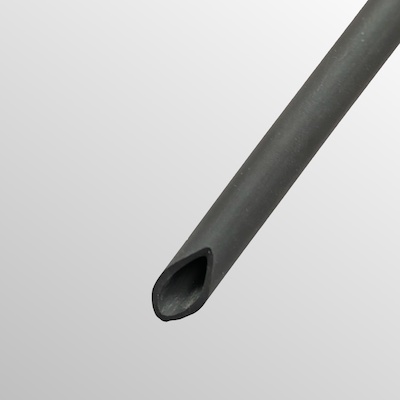Short delivery time, 1 - 8 weeks on all glassfiber sleevings.
Fluoropolymer - PTFE tube - Fluororubber - FPM tube

Fluoropolymer
The best-known brand name is probably Teflon, discovered by chance at the DuPont laboratories in the 1930s while working on refrigerants. This new substance, which was resistant to most acids, solvents and alkalis showed had a much higher temperature stability than all other known plastics.
Fluorocarbon compounds such as this one in Teflon also tend to have exceptionally low friction. PTFE, the official abbreviation, is hence very often used instead of a classical lubricant layer for moving machine components.
And it doesn’t want to bond with other substances, so it is easy to clean (as with household pans or medical applications), and nothing really sticks, e.g. adhesives.
Its insensitivity to high-frequency electromagnetic waves leads to very low losses and interference in high-frequency cables (e.g. PTFE is a typical insulator in antenna cables).
Fluororubber
Fluororubber (FPM) is has a similar temperature and chemical resistance, but is softer and more elastic. Tubes made with this material can be bent, stretched and pressed, and it is easy to make water tight connections.
Its outstanding mechanical properties can withstand the toughest loads.
This material is typically used as an insulator and cable protection in very harsh environmental conditions, as protection against aggressive oils or diesel fuels.
FPM PTFE Tube - Product selection
| Material | Temperature °C | Description | Diameter | Product page / data sheet |
|---|---|---|---|---|
| FPM | 200°C - 300°C | Highly flexible, chemical-resistant, mechanically stable | as required | IVDF |
| PTFE | 260°C | Chemically resistant, high-frequency resistant, high lubricity | 0,1mm - 25mm | PTFEI |
| FEP | 200°C | Chemical-resistant, transparent, radiation-resistant, weather-resistant | up to 120mm | FEPI |
| PFA | 260°C | Sterilizable with steam or ETO | PFAI | |
| PVDF | 150°C | Highly abrasion resistant | IKNR |
Contact
Bastech GmbH
Industrieststraße 12
94428 Eichendorf
Germany
Tel.: +49 9952 90911-0
Fax: +49 9952 90911-290
info@bastech.de